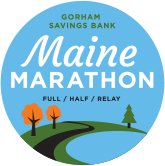Medical Aid Stations
The primary medical tent will be at the start/finish line. Three additional aid stations can be found along the course: mile 5/21, mile 11.5/14.5 and mile 18.7. There will be medical professionals staffing these sites to meet your medical needs. Vaseline for chafing, blister/abrasion care, ice, basic medications and other supplies will be available. We are also available in the unfortunate event of an emergency. We will be supported by paramedic services on the course, medical professionals on bicycles and ambulances placed strategically along the way.
Tips for runners
Hydration
Water stations with both water and sports drink (Gatorade) will be located along the course every couple miles. It is important to stay hydrated during the race, but the danger of over-hydrating is also real. If you drink excessive water during the race, you can lower your blood salt level (hyponatremia) with serious consequences. We recommend frequent small amounts of fluid with a combination of water and sports drink. If you are feeling dizzy, lightheaded, confused, or have severe cramping, go to one of the medical aid stations for assistance.
Nutrition
An average runner can burn about 3,000 calories running a full marathon. Eat well in the days preceding the event as you want your muscle glycogen stores (the sugar fuel muscles use to work) to be full before the race. Be sure to eat a good breakfast the day of the race and consume some calories during the race to prevent your blood sugar from dropping too low. Low blood sugars can cause early fatigue or if low enough can become an emergency. Use whatever method you have trained with, including nutrition bars, gels, or even cookies, rather than trying a new method for the race. There will not be food available on the race course, so be sure to bring your own. Be sure to load up after the race – by replacing calories during the first two hours post-race, you give exhausted muscles the energy to refuel more efficiently.
Weather and Clothing
Early October in Maine is unpredictable. The average temperature is in the 50-degree range, but it has been into the 80s and down to the 20s. Come prepared for heat or cold, and keep an eye on the weather forecast as the date approaches. Dress in light layers that are easily removable. Remember that you can always take clothes off during a run, but it’s much harder to add them on. Don’t forget a dry set of clothes for after the race!
You should feel confident that your entire race outfit is comfortable and cool, without causing skin breakdown. Race day is not the time to experiment or try to make improvements in clothing or shoes. Be especially aware of rubbing under the arms, over the nipples and between the thighs. Be sure that your socks and shoes have been shown not to cause blisters over long distances. Vaseline and band-aids are available if necessary, but prevention works much better.
Welcome to Portland, and have a fantastic race!
Ria Isacke, DO
Medical Director









